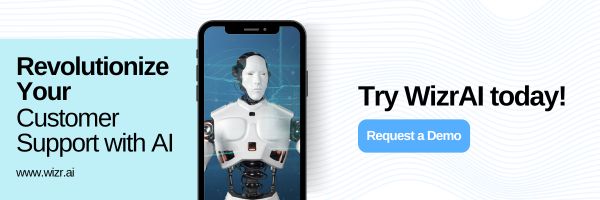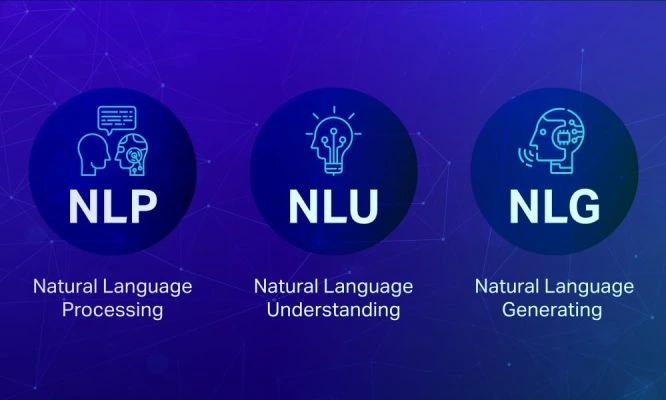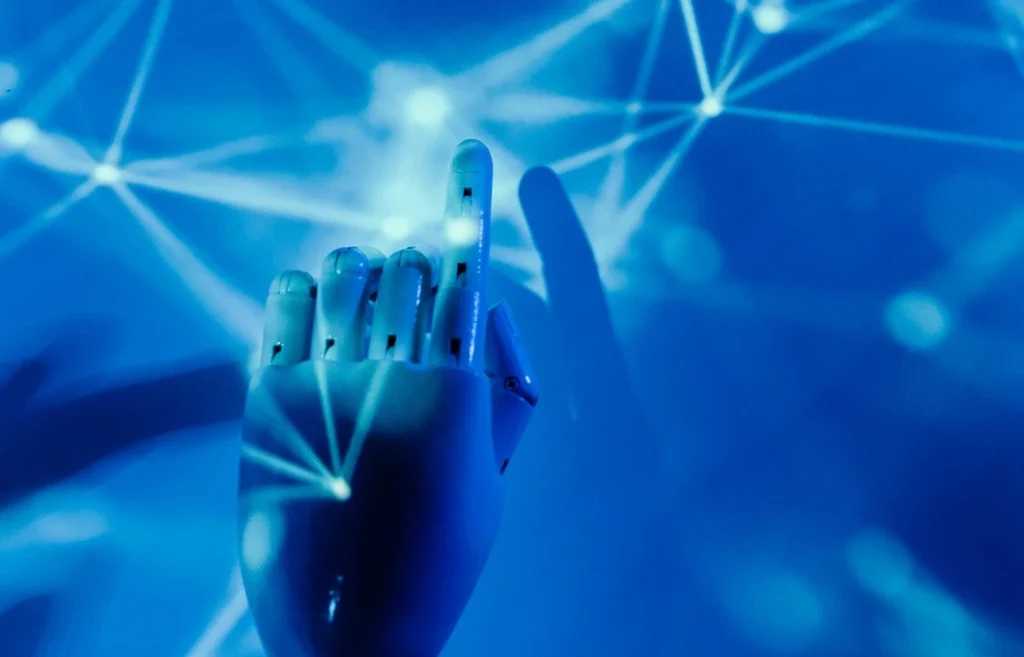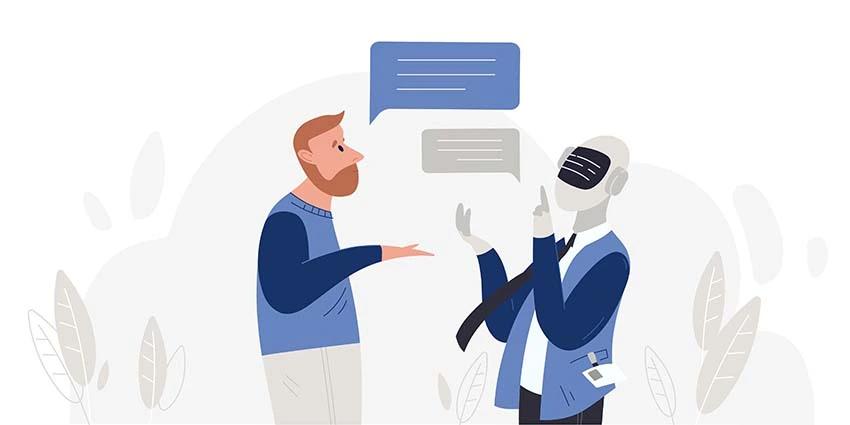AI-driven chatbots are transforming customer service because they enable efficient, responsive, and human-like interactions. Nonetheless, this power is based on three critical technologies, which include: Natural Language Processing (NLP), Natural Language Understanding (NLU), and Natural Language Generation (NLG). Conventional wisdom has it that these are interchangeable terms yet they have different roles to play in enabling chatbots to comprehend, process, and provide useful feedback, respectively. Distinguishing between NLP vs NLU as well as NLG vs NLU is crucial to improving customer support through AI for Natural Language Processing (NLP). In this blog post, we will look at how these technologies work together to boost chatbot performance while enhancing user experience and satisfaction.
What is Natural Language Processing (NLP)?
NLP, which is a subfield of AI for Natural Language Processing (NLP), allows computers to understand, interpret, and communicate human languages. It is the underlying technology in many AI applications, like chatbots or virtual assistants, through text or voice analysis and generation techniques. Using NLP Tools, including tokenization, POS tagging, and sentiment analysis, among others, makes it possible for machines to process huge amounts of natural language data, hence extracting meaning from them, as explained in this NLP and Generative AI guide.
In customer service, AI for NLP lets chatbots identify user questions, determine their intended purpose, and respond accurately. Throughout its life cycle, chatbot accuracy continues to increase as NLP models apply machine learning combined with deep neural networks for a more intuitive interaction.

What is Natural Language Understanding (NLU)?
Natural Language Understanding (NLU) is the study of deriving meaning from text or speech as done in NLP, albeit narrower and deeper. This means that you will make NLU understand the user’s intentions, ID entities, and the context within which an expression is placed, unlike basic NLP that merely structures the language.
In terms of chatbots and virtual assistants, it is very important to have a deeper understanding regarding customer inquiries using the NLU model. For example, if you say, “Can I return the order?” then this NLU-operated chatbot will not just take down the words but also know that what is being asked about is returning purchased goods. By so doing all these, an agent can give more suitable advice without wasting any other useful time.
What is Natural Language Generation (NLG)?
Natural Language Generation (NLG) implies rendering structured data into text or speech that seems to be natural. NLU being responsible for interpreting the input that is received by an application, NLG acts as a bridge, enabling artificial intelligence to come up with coherent answers that relate to the context they are given. For instance:
Within the customer service area, chatbots should always sound smoothly flowing and enjoyable through the application of computer-generated text. Chabots use NLG instead of following ready-made scripts to make cordial messages that are dependent on customer history and current chat flows. An NLG-activated chatbot could reply something like this when asked by a user about order status:
Chatbots can now also answer more sophisticated questions about goods, shipping dates, etc., utilizing available data from customer purchase histories on websites after integrating machine learning algorithms into systems.
NLP vs NLU vs NLG: Key Differences in AI Technologies

The terms Natural Language Processing (NLP), Natural Language Understanding (NLU), and Natural Language Generation (NLG) are often used interchangeably, but they serve distinct purposes in AI-driven language applications. Understanding the Difference between NLP, NLU, and NLG is crucial for creating intelligent AI systems that can understand and respond to human language effectively. Below is a table highlighting the key differences:
| Feature | Natural Language Processing (NLP) | Natural Language Understanding (NLU) | Natural Language Generation (NLG) |
| Definition | A broad AI field that processes and analyzes human language. | A subset of NLP that focuses on interpreting and understanding language. | A subset of NLP that generates human-like text or speech. |
| Primary Function | Processes text and extracts useful information. | Recognizes intent, context, and meaning in text or speech. | Creates coherent and contextually appropriate responses. |
| Key Techniques | Tokenization, syntax parsing, named entity recognition (NER), sentiment analysis. | Intent detection, entity recognition, context analysis. | Text summarization, content personalization, automated response generation. |
| Example in Chatbots | Processes customer queries to extract keywords and intent. | Understands whether a user is asking about a refund, delivery, or general inquiry. | Generates a natural and personalized response, such as “Your order will arrive tomorrow.” |
| Role in AI for Customer Service | Acts as the backbone for chatbot communication. | Helps chatbots understand what users mean, even with variations in wording. | Ensures chatbot responses sound human-like and engaging. |
Each of these technologies plays a vital role in creating intelligent and responsive AI-driven chatbots that enhance customer interactions, demonstrating the role of NLP in AI.
How NLP, NLU, and NLG Work Together to Improve Chatbot AI
For chatbots to provide a seamless experience of human-like conversations, it requires the collaboration of NLP, NLU, and NLG in AI. Here’s a discussion of how these three technologies work together:
User Input Processing (NLP)
When a user inputs a query, Natural Language Processing (NLP) is used to split the text into component parts, such as words or phrases. NLP models analyze the main elements of the text, including grammar, syntax, and sentiment, among other informational pieces.
Understanding Intent (NLU)
After the text has been processed through NLP, it undergoes Natural Language Understanding (NLU) to determine the user’s intent and extract relevant information. An example would be if a customer asks, “Can I return my order?” In this case, NLU recognizes that the intention behind this user query is a “return request,” while the entity involved here is the “order.” This highlights the purpose of Natural Language Processing (NLP) in customer service.
Generating a Response (NLG)
The information extracted by NLU is then used by the Natural Language Generation (NLG) system to produce a meaningful and contextually relevant answer, such as: “Yes, you can return your order within 30 days. Let me help you with that.” This is far more useful than a simple, computer-like reply such as “Return possible.”
Final Interaction & Learning
Through conversations with users, these AI models become smarter over time. As chatbots interact with users, their ability to process and respond improves, resulting in better, more accurate interactions. This iterative learning allows AI to refine its Natural Language Processing techniques and Natural Language Processing models to provide more accurate responses.
In chatbot technology, NLP, NLU, and NLG improve the overall customer experience by ensuring that chatbots accurately understand queries, generate contextually appropriate responses, and engage in more natural, human-like interactions. This process demonstrates the importance of NLP, NLU, and NLG for chatbots in AI.
Therefore, NLP/NLU/NLG can enable businesses to create AI-driven customer service chatbots that accurately understand queries, generate contextually relevant responses, and give a better user experience.
Benefits of NLP, NLU, and NLG for Customer Service with Chatbots

Integrating NLP (Natural Language Processing), NLU (Natural Language Understanding), and NLG (Natural Language Generation) into chatbots presents several significant opportunities for customer service:
- Faster Processing with NLP, NLU, and NLG
Using NLP (Natural Language Processing) allows chatbots to quickly interpret customer queries, while NLU (Natural Language Understanding) ensures they understand the user’s intention, even when the question is phrased differently. NLG (Natural Language Generation) software generates responses that are indistinguishable from those produced by humans, facilitating the prompt resolution of customer cases without requiring staff intervention. This expedites solution times and reduces waiting periods.
- 24/7 Availability of NLP, NLU, and NLG Chatbots
Moreover, chatbots that employ these technologies provide around-the-clock availability and can respond to specific client needs at any time, boosting customer satisfaction through immediate support, especially during low-traffic periods or off-hours.
- Personalized Touch with NLU and NLG
NLU (Natural Language Understanding), in conjunction with NLG (Natural Language Generation), creates context-aware, personalized dialogues. Chatbots understand customer backgrounds, prior choices, and unique circumstances, acting as personal assistants. These customized experiences lead to higher satisfaction and increased customer loyalty over time.
- Consistent Responses with NLP Integration
Through NLP (Natural Language Processing) integration, chatbot responses remain consistent and free from errors commonly associated with human agents. For example, NLP ensures that chatbot replies maintain a uniform tone and accuracy, similar to a customer service representative consistently answering inquiries about the company’s products, services, or other relevant information.
Applications of NLP, NLU, and NLG in Chatbot AI for Customer Support
NLP, NLU, and NLG play specific roles that, when combined, make chatbot-powered customer support systems more effective and efficient. Here are some use cases:
1. Intent Recognition and Query Classification
Chatbots can use NLP (Natural Language Processing) and NLU (Natural Language Understanding) to sort customer inquiries such as account queries, product complaints, billing queries, or technical assistance into categories. Chatbots are able to respond faster and more accurately by understanding the intention behind the question asked. This highlights the difference between NLP, NLU, and NLG as each technology contributes its own unique capability to understand and process customer queries.
2. Personalized Recommendations and Product Support
For instance, by analyzing customer history as well as present interaction patterns, NLG (Natural Language Generation) powers chatbots in providing personalized product recommendations or troubleshooting assistance. For example, a chatbot may propose new products based on previous purchases or help a user troubleshoot technical issues. This showcases the application of Natural Language Generation (NLG) for Chatbots to enhance customer interactions through AI-driven personalization.
3. Automating FAQs
Most customer service questions are frequent and tend to be handled by computer programs called bots that use NLP (Natural Language Processing) and NLG (Natural Language Generation). For instance, chatbots that recognize common queries (e.g., “What time does your company open?”) could supply automated answers quickly, thereby releasing agents to deal with more challenging requests. This illustrates the purpose of Natural Language Processing (NLP) in Customer Service, where NLP techniques streamline routine support tasks.
4. Real-Time Language Translation
With NLP (Natural Language Processing), chatbots can comprehend various dialects, making it possible for enterprises to offer support globally. In addition, chatbots use NLU (Natural Language Understanding) to identify what language the user prefers; this enables them to speak in the users’ language, reducing communication barriers and enabling companies to offer global customer support. This demonstrates how NLP, NLU, and NLG in AI improve customer experience by enabling multilingual support.
5. Sentiment Analysis and Customer Feedback
One way chatbots evaluate customer feelings during their exchanges with them is through NLP tools like sentiment analysis. Depending on whether the client is happy or angry, bots make decisions on how to talk to them. This helps companies in addressing concerns immediately and increasing satisfaction among clients. This reflects how NLP AI Detectors and Natural Language Processing Techniques like sentiment analysis help monitor customer sentiment and enhance chatbot interactions.
Future Trends in AI-Powered Chatbots: Advancements in NLP, NLU, and NLG

Chatbots powered by NLP (Natural Language Processing), NLU (Natural Language Understanding), and NLG (Natural Language Generation) continue to evolve, just like AI technology. Here are some of the future trends concerning these technologies as they relate to customer service:
1. More Human-Like Conversations
There will soon come a time when chatbots can engage customers in conversations as if they were humans due to ongoing progress in Natural Language Generation (NLG). The future will witness not only responsive chatbots but also those capable of foreseeing client requirements while conducting complex, dynamic dialogues with them. This demonstrates the difference between NLP, NLU, and NLG, as NLG plays a pivotal role in chatbot conversations.
2. Emotion Recognition and Empathy
The next frontier for NLU (Natural Language Understanding) is recognizing emotions from text or speech. By blending sentiment analysis with deep human emotion awareness, chatbots will be able to address clients’ needs with empathy, fostering customer satisfaction and loyalty. This addresses how NLP, NLU, and NLG improve customer service with Chatbot AI by offering more personalized and effective responses.
3. Multi-modal Interactions
NLP (Natural Language Processing) will expand into multimodal interactions as the rise of voice-activated assistants takes place, where chatbots will receive text inputs as well as voice commands, images, and videos. This advancement will allow customers to engage with chatbots through various platforms, completely transforming their experience. This shows the increasing importance of Natural Language Processing Tools in shaping the future of customer support.
4. Better Context Awareness
With advancements in NLU (Natural Language Understanding), chatbots will be able to maintain a conversation over time and remember previous interactions. This ensures that chatbots can offer a seamless experience, continuing conversations without losing context. Natural Language Understanding (NLU) for Chatbots will play a significant role in improving user experience by remembering prior discussions and adapting to evolving conversations.
5. Cross-Channel Integration
Chatbots are increasingly integrated across different platforms such as Facebook Pages, websites, and Slack, offering consistent customer support. This requires robust NLP and NLU technologies to ensure seamless communication, making interactions easier and more efficient. This is one of the ways NLP, NLU, and NLG in AI contribute to creating a unified customer support experience across various platforms.
6. Automating Complex Tasks
Automating complex tasks, including returns, order handling, and troubleshooting technical issues like software bugs, is an increasing trend in chatbot technology. NLG and NLP are central to these advancements, enabling chatbots to handle a wide variety of customer service functions, thus reducing the need for human intervention and increasing operational efficiency.
Conclusion
Customer service has been revolutionized by NLP, NLU, and NLG, enabling chatbots to comprehend, process, and generate human-like responses. The adoption of these technologies allows businesses to provide fast, personalized, and consistent customer service around the clock, improving customer satisfaction and boosting loyalty. As technology continues to evolve, Natural Language Processing (NLP), Natural Language Understanding (NLU), and Natural Language Generation (NLG) will become even more advanced, enabling chatbots to understand emotions, automate complex tasks, and deliver exceptional customer experiences with reduced costs and improved productivity.
FAQs
1. How do chatbots differ in NLP, NLU, and NLG?
Chatbots understand and process human language using an overarching technology called Natural Language Processing (NLP). Natural Language Understanding (NLU) looks into what the user actually means with their input, including intent and context, while Natural Language Generation (NLG) allows chatbots to come up with responses that appear more like those of a human being based on all the information that has been processed. This helps clarify the difference between NLP, NLU, and NLG in chatbot systems.
2. How can NLP, NLU, and NLG be used by customer service agents for better performance?
These technologies make it possible for chatbots to respond faster, accurately, and also personalize their answers when dealing with customers’ queries. By processing data, understanding what a user wants, and generating natural responses that fit the context just right, NLP, NLU, and NLG improve customer satisfaction, thereby reducing operational costs at the same time. This highlights the role of NLP in AI for customer service improvement.
3. Can existing customer service systems have NLP, NLU, and NLG modules added to them?
Yes, there are several customer service systems where these technologies can be incorporated, such as websites, mobile apps, or messaging platforms, to enhance the performance of chatbots. Many chatbot platforms already come with built-in capabilities for NLP, NLU, and NLG, making it possible for companies to install these components without much trouble, improving their customer service operations.
4. Are NLP, NLU, and NLG only used for chatbots?
No, there are many other applications beyond chatbots where these technologies are employed, such as virtual assistants, voice recognition systems, and translation tools, among others. This is why the use of NLP, NLU, and NLG extends beyond AI into customer service areas, enhancing various aspects of customer interaction.
5. What are future directions in AI chatbots with NLP, NLU, and NLG?
The next step for AI chatbots would be to have more human-like conversations, recognize emotions for empathetic responses, support multimodal interactions (text, voice, and visual), and improve context awareness. It is expected that once AI becomes sophisticated enough, chatbots will be able to handle increasingly complex tasks while offering more personalized proactive support. This evolution will involve better use of Natural Language Understanding (NLU) for Chatbots and Natural Language Generation (NLG) for Chatbots to enhance overall customer service.
About Wizr AI
Wizr AI is an Advanced Enterprise AI Platform that empowers businesses to build Autonomous AI Agents, AI Assistants, and AI Workflows, enhancing enterprise productivity and customer experiences. Our CX Control Room leverages Generative AI to analyze insights, predict escalations, and optimize workflows. CX Agent Assist AI delivers Real-Time Agent Assist, boosting efficiency and resolution speed, while CX AutoSolve AI automates issue resolution with AI-Driven Customer Service Automation. Wizr Enterprise AI Platform enables seamless Enterprise AI Workflow Automation, integrating with data to build, train, and deploy AI agents, assistants, and applications securely and efficiently. It offers pre-built AI Agents for Enterprise across Sales & Marketing, Customer Support, HR, ITSM, domain-specific operations, Document Processing, and Finance.
Experience the future of enterprise productivity—request a demo of Wizr AI today.
